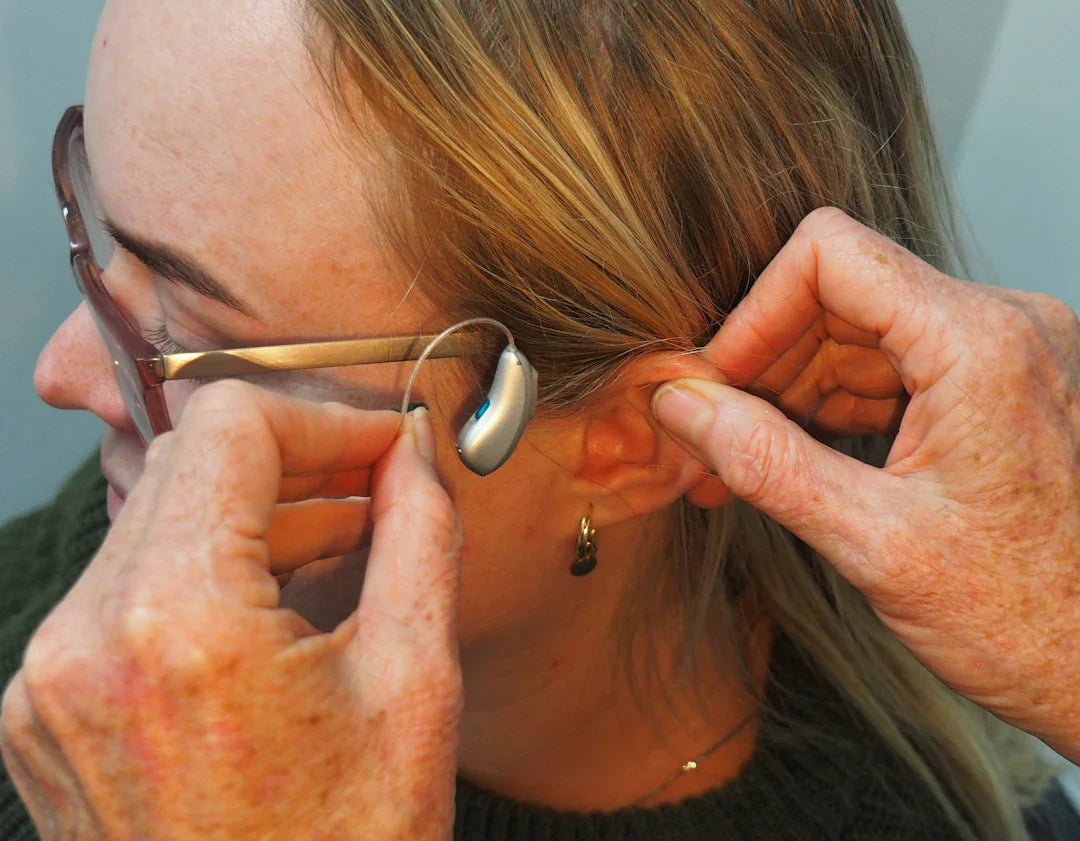Hearing aids have transformed the lives of countless individuals suffering from hearing loss, allowing them to engage with the world around them fully. As technologies evolve, the variety of hearing aids available in the market has expanded significantly. This comprehensive guide aims to inform you about the different types of hearing aids, their features, and how hearing care can enhance your quality of life. Whether you're considering a hearing aid for yourself or a loved one, understanding your options is key.
Understanding Hearing Loss
Before delving into the types of hearing aids, it's essential to grasp the concept of hearing loss. Hearing loss can occur due to various factors, including age, exposure to loud noises, or medical conditions. It can manifest in different forms, including:
- Conductive Hearing Loss: This occurs when sound waves are unable to travel through the outer ear canal to the eardrum and the tiny bones of the middle ear.
- Sensorineural Hearing Loss: This is caused by damage to the inner ear or the nerve pathways that lead to the brain.
- Mixed Hearing Loss: A combination of conductive and sensorineural hearing loss.
For individuals experiencing hearing loss, audiology plays a crucial role in diagnosing the issue and recommending the appropriate solutions, such as hearing aids.
Types of Hearing Aids
When it comes to hearing aids, there are several types, each catering to different levels and types of hearing loss. Below are the primary categories of hearing aids you may encounter:
Behind-the-Ear (BTE) Hearing Aids
BTE hearing aids are worn behind the ear and are suitable for individuals of all ages with varying degrees of hearing loss. They consist of a hard plastic case that houses the components, a tube that directs sound into the ear canal, and an ear mould or dome that fits securely inside the ear. Key features of BTE hearing aids include:
- Durability and compatibility with various ear shapes
- Robust battery life
- Easier handling for those with dexterity issues
BTE models can also come equipped with advanced features such as connectivity options for audio devices, making them an excellent choice for those who enjoy streaming music or taking calls.
In-the-Ear (ITE) Hearing Aids
ITE hearing aids are custom-made to fit inside the outer ear and are less visible than BTE devices. They are recommended for mild to moderate hearing loss and offer several advantages:
- Comfortable fit due to customisation
- Better amplification for moderate hearing loss
- Fewer components that can cause feedback
One important aspect of ITE hearing aids is ensuring proper maintenance. Regular earwax removal is essential, as the build-up can affect functionality. Replacement wax guards are an easy solution to keep your device in optimal condition.
In-the-Canal (ITC) Hearing Aids
ITC hearing aids are smaller than ITE devices and fit partially in the ear canal. They are designed for individuals with mild to moderate hearing loss and are less visible. Their benefits include:
- Discreet design that is more aesthetically pleasing
- Easy access to the volume controls
- Suitable for those who want less visible hearing solutions
However, since they sit further inside the ear, ITC devices may require more frequent cleaning and maintenance, such as earwax removal and the replacement of wax guards.
Completely-in- Canal (CIC) Hearing Aids
The smallest type of hearing aid, CIC devices fit completely inside the ear canal and are nearly invisible. They are best suited for individuals with mild to moderate hearing loss. Some of the notable characteristics of CIC hearing aids include:
- Extremely discreet, making them nearly invisible
- Custom-fitted to the ear canal
- Sitting close to the eardrum, providing natural sound quality
Due to their small size, CIC hearing aids may lack certain features, such as manual controls, which can impact usability for some individuals. Regular maintenance, including earwax removal and attention to wax guards, remains critical to maintain peak performance.
Receiver-in-Canal (RIC) Hearing Aids
RIC hearing aids are similar to BTE devices but with a design that allows the speaker (receiver) to be placed in the ear canal. This offers a more natural sound experience compared to traditional BTE aids. Benefits include:
- Lightweight and comfortable to wear
- Minimally visible while providing audio through the canal
- Open fit options that reduce the feeling of ear fullness
The closer positioning of the receiver to the eardrum enhances sound quality, making RIC hearing aids a popular choice among users.
Advanced Features to Consider
As technology evolves, many modern hearing aids come equipped with advanced features that can significantly enhance the user experience. Here are some cutting-edge innovations to look out for:
Bluetooth Connectivity
Many hearing aids now offer Bluetooth connectivity, allowing users to connect their devices directly to smartphones, televisions, and other devices. This feature enables users to stream calls and audio directly into their hearing aids, providing extra clarity and convenience.
Noise Reduction Technology
Modern hearing aids often include noise reduction technology that helps filter background noise, allowing for clearer conversation in loud environments. This is especially useful in social settings or public places.
Rechargeable Batteries
Gone are the days of fiddling with small batteries. Many hearing aids now come with rechargeable options, making ownership hassle-free. Users can simply place their hearing aids in a charging dock at night and have them ready for the next day.
Directional Microphones
This technology helps enhance sound coming from the front while reducing noise from the sides and behind. Directional microphones can significantly improve the listening experience in crowded areas, making conversations clearer.
The Importance of Proper Maintenance
Maintaining your hearing aids is crucial for ensuring their longevity and performance. Proper hearing care involves more than just wearing them; it includes cleaning and storing them correctly. Here are some simple tips for maintaining your hearing aids:
- Regularly clean your hearing aids according to the manufacturer's instructions.
- Inspect the tubing and earmould for signs of wear and tear.
- Replace wax guards and filters regularly to prevent earwax blockage.
- Store your devices in a safe, dry place when not in use.
- Schedule regular check-ups with your audiologist to ensure proper fitting and functioning.
Proper earwax removal techniques are also essential. Wax buildup can interfere with the functioning of the device, causing sound distortion or complete failure. Regular professional cleaning can help maintain hearing aids and ensure maximum efficacy.
Finding the Right Hearing Aid
Choosing the right hearing aid can be overwhelming due to the variety of options available. It's essential to consult with an audiologist who can guide you through the selection process, ensuring you find a device compatible with your needs and lifestyle. Here are some important factors to consider:
- Degree of hearing loss: The type of hearing aid suitable for you largely depends on your level of hearing loss, which should be assessed through an audiological evaluation.
- Lifestyle needs: Consider how you plan to use your hearing aids. If you frequently find yourself in noisy environments, advanced features like noise reduction may be crucial.
- Budget: Hearing aids can range significantly in price. Understand your budget and explore options that provide the best value for your needs.
- Aesthetic preferences: Some individuals prefer discreet hearing aids, while others may be comfortable with more visible models. Choosing one that fits your personal style is essential.
Don't hesitate to ask your audiologist about trials or demonstrations of different models to find the one that feels right for you.
Empowering Yourself with Knowledge
Understanding the different types of hearing aids is crucial for making an informed decision that fits your lifestyle and needs. Each type offers unique benefits, and it's essential to consider factors like degree of hearing loss, lifestyle, and maintenance before making your selection. Remember, regular hearing care, including earwax removal and timely replacement of wax guards, will enhance your hearing experience significantly.
By staying informed and proactive in your hearing health journey, you can seize the opportunity to improve your communication abilities, engage more fully with your surroundings, and enjoy a higher quality of life. Your hearing is an invaluable asset—ensure it remains sharp for years to come!




